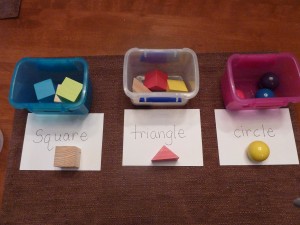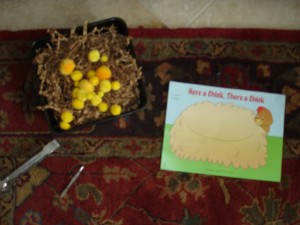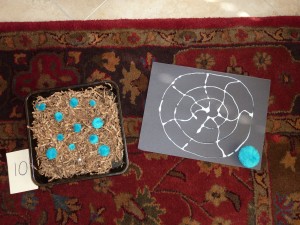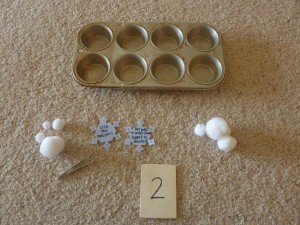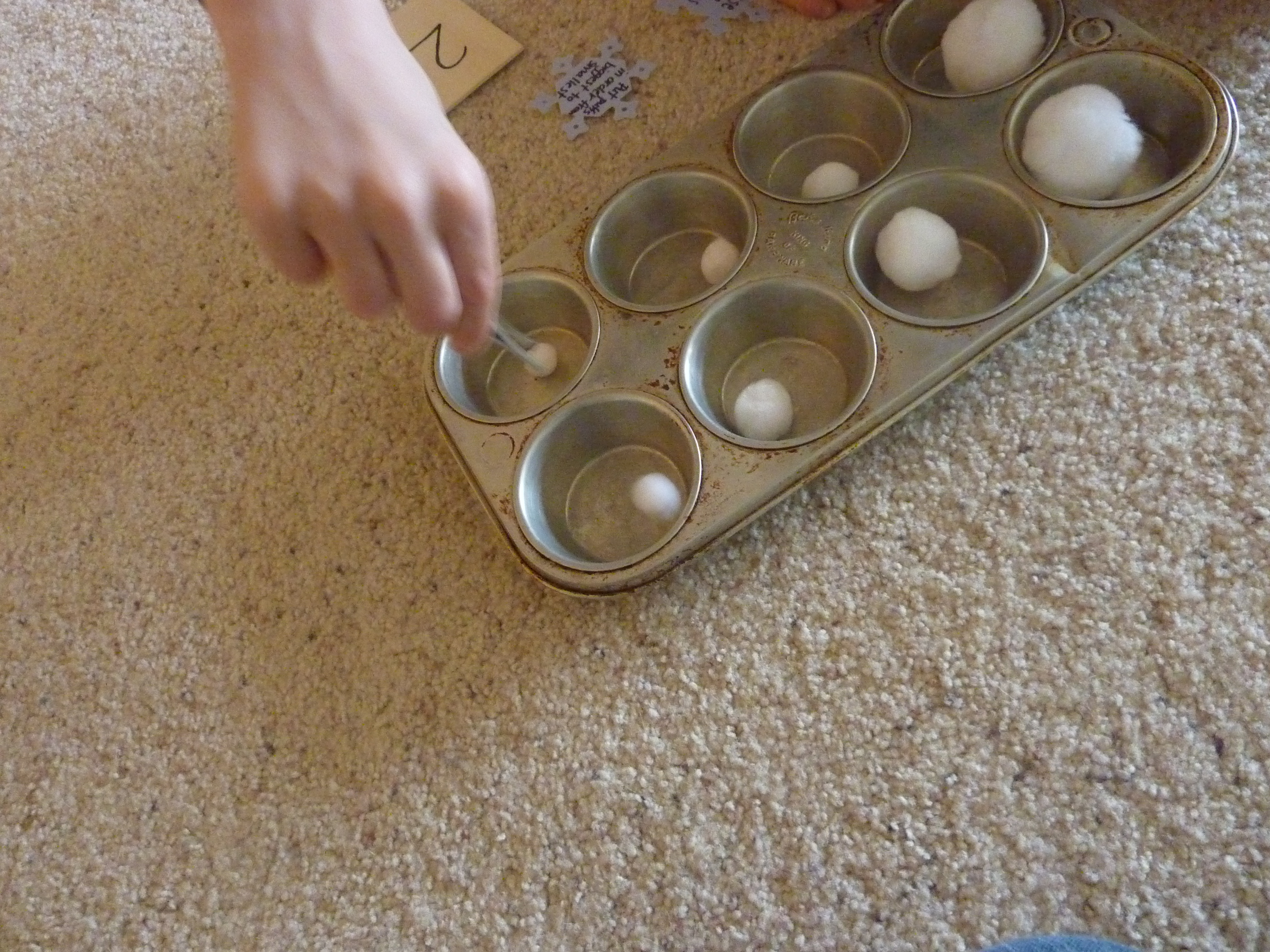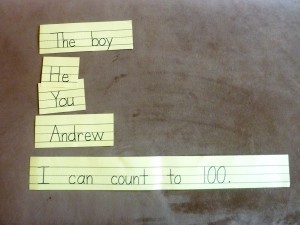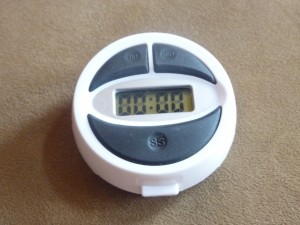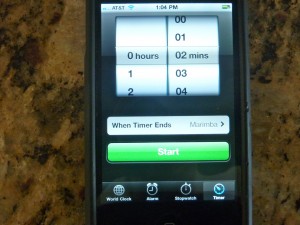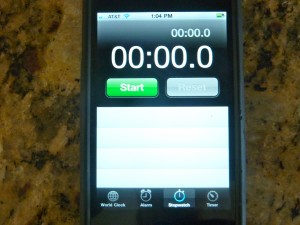
I got this idea from a game that Andrew’s class had been playing called “Ned’s Head.” The idea for this and the “Ned’s Head” game comes from using the sense of touch to locate or identify an object. (Here is a google link to show what I’m talking about.)
Last year I found this St. Patrick’s Day themed hat in the dollar section of Target (I was just there today and they still have them!). When I bought it, I didn’t know what I would do with it but I knew it would come in handy for something. After looking through what skills I was working on and what sorts of things I could do with a hat like this, I decided to make my own Ned’s Head game (their’s costs $19.99, mine costs $1 when used with things we already have!)
I gathered up some objects…

used some shamrock shaped calendar cutouts and wrote some clues. The clues were written to get him thinking about what the items are used for or certain characteristics that would be easy to detect by feel.

When doing the station, we would read the clue, he would put his hand in and with “no peeking,†see if he could locate the object.
Variations:
- This could be done in a very explicit way by using word names – “Find the ___.â€
- FInding an object that goes with something – ex. toothbrush and toothpaste.
- Finding an object that goes with a certain function – ex. Find something you use to help you drink.
This is another way to add mystery and intrigue to My Obstacle Course while strategically working on skills that your child needs.
Engage, Encourage and Empower!




